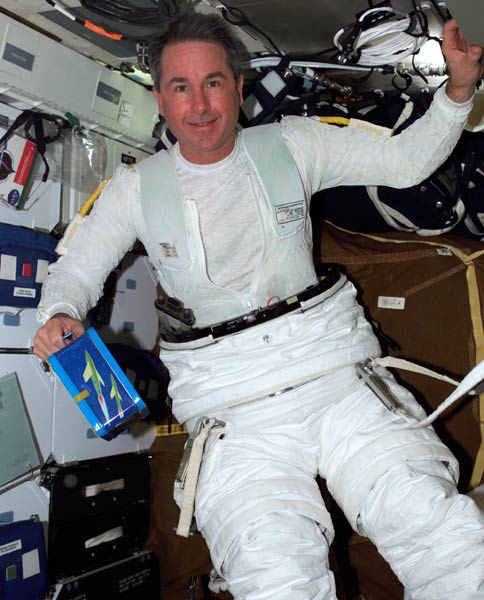Keeping Cool: Europe Adapts Spacesuit Tech for Work on Earth

Whiletoiling outside the International Space Station (ISS), astronauts depend onspacesuits not only to stay alive in their airless environments, but also tostay cool during their rigorous, hours-long work to maintain the orbitallaboratory.
Engineersin Europe are adapting the same cooling systems used inside those spacesuits toaid firefighters, industrial workers and others who face scorching temperatureson Earth. Dubbed the Safe&Cool program, the work is part of technologytransfer effort by the European Space Agency (ESA).
"The maingoal is to keep the temperature and humidity levels inside [work] suits at acomfortable level when operating in harsh environments," Stefano Carosio,Safe&Cool project manager for ESA at the Italian firm D'Appolonia, told SPACE.com."We used in particular the concept of cooling vests worn by astronauts forthermal management."
ESAofficials said that an average of about 1,500 cases of heat stroke occur eachyear in Europe due to the work garments that are incapable of sufficiently sheddingexcess heat or moisture. An estimated 50,000 are subjected to heat stress, whichcan lead to injury due to loss of concentration, they added.
A coolerworksuit
Before steppinginto their NASAspacesuits, astronauts don a one-piece mesh garment lined with water-coolingtubes. The suit makes up about 6.5 pounds (2.9 kilograms) of the more than 100-pound(45 kilogram) U.S.-built Extravehicular Mobility Unit (EMU), which can besubjected to temperatures of up to 250 degrees Fahrenheit (121 Celsius) in fullsunlight, according to NASA descriptions.
On Earth, Carosioand his team wove the spacesuit inspired water-cooling tubes into a fabric composedof materials tailored to keep the skin feeling dry while siphoning off moisturethrough suction channels. A water-binding polymer coats the fabric, absorbingexcess moisture or releasing it during "flash events," when the cooling systemis overwhelmed, to mimic the human body's sweating process.
Breaking space news, the latest updates on rocket launches, skywatching events and more!
Once assembled,the warped and knitted fabric forms the central layer of a traditionalthree-layer protective garment, the ESA said.
"The ideawas to combine advanced polymers to bind humidity and cooling systems, and toreduce temperature in order to recreate an integrated air conditioning system,"Carosio said, adding that the system can be adapted to suit its wearer'spurpose. "It is definitely a matter of functional design."
Morework needed
But clearlywork remains to be done.
Safe&Coolresearchers hope to their project will yield protective clothing robust enoughto meet directives set by the European Union. The technology has already founduses in competitive racing in clothing developed by the firm Grado Aero Espace,with Spanish Moto-GP driver Sete Gibernau donning a cooling vest while Formula-1McLaren mechanics donned whole suits in a trial.
"We didexplore them," McLaren spokesperson Clare Robertson told SPACE.com.
McLarenofficials said pit mechanics wore the specialized cooling suits during apractice run to test their effectiveness, but found that the standard,fire-retardant Nomex suits were still a better choice for their needs.
Meanwhile,ESA officials believe the cooling technology could eventually prove a viablealternative for sportswear as well as protective gear, with the Poland-basedfirm TAPS testing its potential to regulate temperatures in car sears and othertransports.
"Furtherfunctionalities are being investigated," Carosio said.
- ISS Crew Dons U.S. Spacesuits in Spacewalk Rehearsal
- Four Technologies Make Space Hall of Fame Ice
- Helping Hospitals: Space Technology Aids Life on Earth

Tariq is the award-winning Editor-in-Chief of Space.com and joined the team in 2001. He covers human spaceflight, as well as skywatching and entertainment. He became Space.com's Editor-in-Chief in 2019. Before joining Space.com, Tariq was a staff reporter for The Los Angeles Times covering education and city beats in La Habra, Fullerton and Huntington Beach. He's a recipient of the 2022 Harry Kolcum Award for excellence in space reporting and the 2025 Space Pioneer Award from the National Space Society. He is an Eagle Scout and Space Camp alum with journalism degrees from the USC and NYU. You can find Tariq at Space.com and as the co-host to the This Week In Space podcast on the TWiT network. To see his latest project, you can follow Tariq on Twitter @tariqjmalik.
